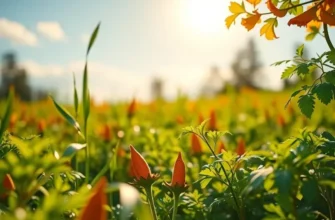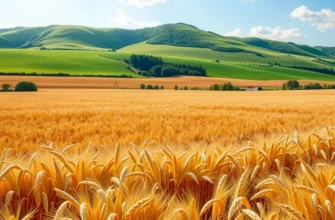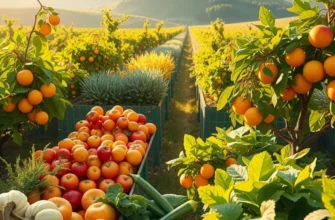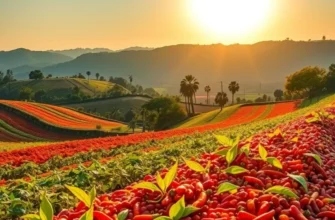From the warm wafts of sourdough to the sweetness of challah, bread-making rituals are steeped in history and cultural significance. Across continents, families gather to knead, shape, and share this staple food, transforming simple ingredients into cherished traditions. The act of bread-making transcends mere sustenance; it carries stories of heritage, community, and celebration. Join in this exploration of diverse bread-making rituals that define cultures and foster connections.
The Heart of Tradition: European Bread Rituals

Throughout Europe, bread is not just a staple food but a vessel of tradition, deeply woven into the cultural fabric of each nation. From the baguettes of France to Italy’s ciabatta, each country has breads that symbolize not only daily sustenance but also celebrations of life, continuity, and communal bonds.
In France, bread is central to both simple family meals and grand festivities. The baguette, crusty and golden, is an emblem of French culinary identity. However, it is in celebratory loaves, such as the Galette des Rois, where rituals unfold. Eaten during Epiphany, this cake-like bread hides a token. Whoever finds it becomes “king” for a day, epitomizing themes of royalty and festivity.
Germany’s rich bread culture is renowned for its diversity. Rye breads, such as pumpernickel and vollkornbrot, play a pivotal role in German life, especially during holidays. During Weihnachten (Christmas), stollen emerges, a fruit-studded bread dusted with powdered sugar. Historically, stollen symbolizes the wrap of the Christ child, and its consumption is both an act of sustenance and reverence.
Italy, known for its artisanal approach, offers a variety of breads that are tied to local traditions and the agricultural calendar. In Tuscany, the unsalted pane toscano reflects the region’s history of salt wars. During Easter, Italians bake colomba pasquale, a dove-shaped bread symbolizing peace and renewal. Passed down through generations, bread-making remains a cherished family ritual in many Italian households.
These breads often feature in weddings, where they might be exchanged between families or elders bless dough to ensure prosperity. Central to these experiences is the mingling of ancient techniques and local flavors, preserving the essence of cultural memory.
Understanding the meticulous care devoted to these bread customs enhances our appreciation of their role in culinary psychology. For further insights into the cultural interplay of traditions, consider exploring culinary influences shaped by trade.
Thus, European bread rituals form a continuous thread across generations, forging connections between family, culture, and history. This journey through Europe’s bread traditions showcases their enduring symbolism in uniting people both at the table and across time.
Spiritual Nourishment: Bread in Indigenous Cultures

In many indigenous cultures, bread transcends its role as mere sustenance. It becomes a symbol of nurturing, creation, and community. Across the globe, from the sun-baked lands of Africa to the rolling plains of North America, bread rituals weave a tapestry of cultural and spiritual identity.
Among Native American tribes, particularly the Hopi, Pueblo, and Navajo, cornbread or ‘piki’ plays a pivotal role in ceremonies. This bread is often paper-thin and made from a maize batter that’s spread over a hot stone slab. Traditionally, women prepare it in communal kitchens, singing ancestral songs that echo the maize’s journey from the earth to the table. The preparation of piki embodies a spiritual bond with nature. It acknowledges maize as a sacred, life-giving force that has sustained communities for centuries.
In African pastoral and nomadic herding societies, bread also sings a song of unity and survival. Traditional flatbreads like ‘injera’ in Ethiopia or ‘chapati’ among the Maasai are not merely food but cultural artifacts. Injera, a spongy flatbread, is spread across communal platters as the base for nearly every meal, fostering a deep sense of sharing. Made from teff—a resilient grain suited to Ethiopia’s climate—injera connects generations, reminding them of their agrarian roots and adapting to the land’s demands.
Among New Zealand’s Maori, ‘rewena’ bread plays a symbolic role in gatherings. Made using fermented potato yeast, rewena represents both an everyday staple and a ritual offering. Maori traditions stress the importance of hospitality, known as ‘manaakitanga.’ Sharing this bread during communal feasts ties the community to ancestral land and stories, reinforcing social ties and respect for one another.
In each of these instances, the communal nature of bread-making is crucial. The act of gathering ingredients, preparing the dough, and baking together fosters a shared cultural memory. Bread ceremonies become a bridge between the past and the present, an act of remembering ancestors and maintaining a connection to cultural identity. These traditions form a rich tapestry that sustains the spiritual well-being of the community, long after the last crumb is eaten.
For readers interested in exploring how culinary traditions migrate and evolve, this article offers insights into how trade has influenced food cultures globally.
By exploring the sacred traditions of bread across indigenous cultures, one can appreciate how these communities use food to honor their history and ensure their culture’s continuity. Each bread tells a story of survival, adaptation, and unity, proving that sometimes, the simplest foods carry the most profound meanings.
Final words
Bread making rituals across cultures serve as a testament to the enduring human connection through food. These traditions are not just about sustenance; they embody stories of community, love, and resilience. From joyous family gatherings to solemn spiritual practices, each loaf we bake signifies a myriad of meanings—heritage, celebration, and comfort. As culinary enthusiasts explore these practices, they gain insight not only into the recipes but also into the people and stories behind them. Embracing these rituals celebrates diversity, enriches our understanding of global cuisines, and unites us through the universal language of food.








